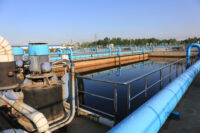The first case on the U.S. Supreme Court’s (SCOTUS) 2022 fall docket was Sackett v. EPA, which asked the Court to consider scaling back the EPA’s authority to regulate some types of wetlands under the Clean Water Act (CWA). One of the main issues in the case is to determine which test courts should use […]
Back to Basics is a weekly feature that highlights important but possibly overlooked information that any EHS professional should know. This week, we examine carbon capture, storage, and reporting. There has been a shift in attitude toward climate action. Instead of being viewed as a source of job loss, climate action is seen as a […]
Last month, the U.S. Senate consented to ratification of the Kigali Amendment to the Montreal Protocol on Substances that Deplete the Ozone Layer. The vote, 69–27, showed strong bipartisan support for the measure. The United States will soon join 137 other countries that have already ratified the Kigali Amendment, according to a media note issued […]
On this week’s episode of EHSDA Shorts, we hear from Allison Short of Auburn University and Subena Colligan of S. Colligan Coaching on their thoughts about how to move beyond safety slogans. Tune in to hear their insights.
Back to Basics is a weekly feature that highlights important but possibly overlooked information that any EHS professional should know. This week, we examine the steps that EHS professionals can take to make their safety programs more sustainable. As initiatives like Environmental, Social, and Governance (ESG) and Total Worker Health® begin to take hold within […]
While the Inflation Reduction Act (IRA) creates opportunities for investors to fund carbon capture, utilization, and sequestration/storage (CCUS) projects and provides Internal Revenue Service (IRS) Section 45Q tax credits at a rate of $85 per ton of carbon dioxide (CO2) captured and stored, the regulatory red tape for permitting in the sector remains daunting. The […]
The EPA announced the first 18 states to receive Bipartisan Infrastructure Law (BIL) funding for water infrastructure improvements. The BIL allocates more than $50 billion to the EPA for repairing the nation’s essential water infrastructure, which helps communities access clean, safe, and reliable drinking water; increase resilience; collect and treat wastewater to protect public health; […]
On September 13, 2022, a group of environmental and community advocacy organizations petitioned the EPA to close “loopholes” in the regulations implementing the Clean Air Act (CAA) that “allow facilities like oil refineries, chemical plants, and incinerators to disregard emission standards, stop reporting their pollution, and avoid fines or other consequences for excess pollution they […]
Having failed to reach the 2008 National Ambient Air Quality Standards (NAAQS) for ground-level ozone by July 20, 2021, the EPA announced a final proposed action to downgrade the following five regions from “Serious” nonattainment status to “Severe”: Dallas-Fort Worth, TX Denver-Boulder-Greeley-Ft. Collins-Loveland, CO Houston-Galveston-Brazoria, TX Morongo Band of Mission Indians, CA New York-N. New […]
The California Air Resources Board (CARB) announced approval of its Advanced Clean Cars II (ACCII) rule on August 25, 2022. The rule establishes a year-by-year road map so that by 2035, 100% of new cars and light trucks sold in California will be zero-emission vehicles (ZEVs), including plug-in hybrid electric vehicles (PHEVs). The regulation realizes […]










